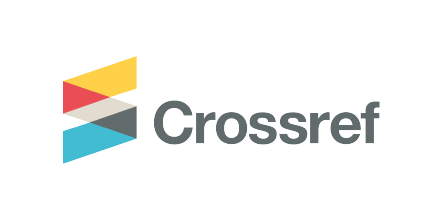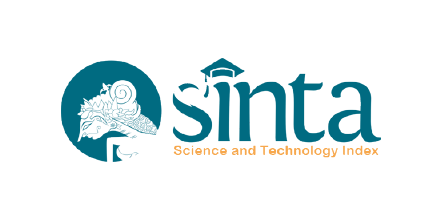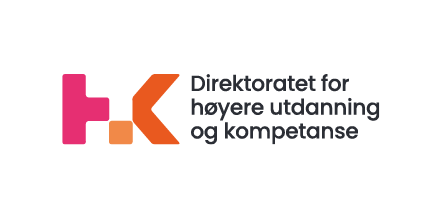EFL Teacher's Classroom Management Practices at an Inclusive School
DOI:
https://doi.org/10.21776/ub.ijds.2020.007.02.10Keywords:
classroom management, inclusive student inclusive schoolAbstract
This research aimed at finding out the classroom management practices by an EFL teacher at an inclusive school. There were four major aspects of classroom management as the focus of this research. Those are rules, physical environment, classroom climate, and teacher's role. The subject of this study was an English teacher in class XI MM 2 at SMK Negeri 3 Singaraja. This study was a case study with qualitative research design. The methods of data collection were observation and interview. The findings showed that the classroom management practices by the teacher were successful to be implemented for both the inclusive and regular students. The rules created and communicated by the teacher were effective to develop the students' behaviour and attitude as well as support the learning process. For the physical environment, the teacher provided spacious space for the physical disability student to move freely. The teacher gave positive and negative reinforcements for the students' attitude and behaviour. Besides, the teacher modified the lesson plan, instruction, and assessment based on the student's special needs. However, the teacher did not interact directly with the inclusive student's parents and it should be done to support the learning process. In addition, there was no special escort teacher and training for the teacher to support the learning process.
References
Allodi, M. W. (2002). A Two-Level Analysis of Classroom Climate in Relation to Social Context, Group Composition, and Organization of Special Support. Kluwer Academic Publishers: Learning Environments Research 5: 253-274.
Alter, P., Haydon, T. (2017). Characteristics of Effective Classroom Rules: A Review of the Literature. Journal of Teacher Education and Special Education 1-14. SAGE Publication.
Block, M. E., Obrusnikova, I. (2007). Inclusion in Physical Education: A Review of the Literature from 1995-2005. Adapted Physical Activity Quarterly, 24, 103- 124. Human Kinetics, Inc.
Bucholz, J. L., & Sheffler, J. L. (2009). Creating a Warm and Inclusive Classroom Environment: Planning for All Children to Feel Welcome. Electronic Journal for Inclusive Education, Vol. 2, No. 4.
Constitution of Republic Indonesia. (1945). Article 31 (1).
Dimitrios, S., Pinelopi, R., & Harilaos, Z. (2018). School Teachers' Attitudes Toward Inclusive Education in Greece. European Journal of Special Education Research, Vol. 3 (3).
Ediyanto, Atika, I. N., Kawai, N., & Prabowo, E. (2017). Inclusive Education in Indonesia from the Perspective of Widya Iswara in Centre for Development and Empowerment of Teachers and Education Personnel of Kindergartens and Special Education. Indonesian Journal of Disability Studies (IJDS): Vol. 04 (02): 014-116.
Efendi, M. (2018). The Implementation of Inclusive Education in Indonesia for Children with Special Needs: Expectation and Reality. Journal of ICSAR: Vol. 02 (01).
Egeberg, H. M., McConney, A., & Price, A. (2016). Classroom Management and National Professional Standards for Teachers: A Review of the Literature on Theory and Practice. Australian Journal of Teacher Education, 41 (7).
Elliott, S. (2008). The Effect of Teachers' Attitude Toward Inclusion on the Practice and Success Levels of Children with and without Disabilities in Physical Education. International Journal of Special Education, Vol. 23, No. 3.
Fajarwati, D. (2017). Implementation of School Management Inclusive Education Institutions. Atlantis Press: Advances in Economics, Business and Management Research Vol 45.
Ferguson, D. L., Kozleski, E. B., & Smith, A. (2001). On Transformed, Inclusive Schools: A Framework to Guide Fundamental Change in Urban Schools. National Institute for Urban School Improvement.
Flem, A., Moen, T., Gudmundsdottir, S. (2004). Towards Inclusive Schools: A Study of Inclusive Education in Practice. European Journal of Special Needs Education, Vol. 19, No. 1.
Frederickson, N., Cline, T. (2002). Special Educational Needs, Inclusion and Diversity: A Textbook. Open University Press: Buckingham.
Hancock, D. R. (2006). A Practical Guide for Beginning Researchers: Doing Case Study Research. Teachers College Press: New York.
Hassan, M. U., Hussain, M., Parveen, I., & De Souza, J. (2015). Exploring Teachers' Experiences and Practices in Inclusive Classrooms of Model Schools. Journal of Theory and Practice in Education, 11(3), 894-915.
Jannah, I. M. (2018). Manajemen Kelas Inklusif di SD N Ketintang II Surabaya. ELEMENTARY: Islamic Teacher Journal, Vol. 6 (2).
Lika, R. (2016). Teacher's Attitude Towards the Inclusion of Students with Disabilities in Regular Schools. International Conference on Innovations in Science and Education.
McLeod, J., Fisher, J., & Hoover, G. (2003). The Key Elements of Classroom Management: Managing Time and Space, Student Behaviour, and Instructional Strategies. ASCD Publications.
Miles, M. B. & Huberman, A. M. (1994). Qualitative Data Analysis: Second Edition. SAGE Publications Inc.
Murata, N. M., Jansma, P. (1997). Influence of Support Personnel on Students with and without Disabilities in General Physical Education. Clinical Kinesiology, 51, 37-46.
Nagler, K. S. & Tirol, P. H. (2016). Effective Classroom-Management & Positive Teaching. Canadian Center of Science and Education: English Language Teaching, Vol. 9, No. 1.
Oliver, R. M., Wehby, J. H., & Reschly, D. J. (2011). Teacher Classroom Management Practices: Effects on Disruptive or Aggressive Student Behaviour. The Campbell Collaboration.
Schmidt, M., Cagran, B. (2006). Classroom Climate in Regular Primary School Settings with Children with Special Needs. Educational Studies, Vol. 32, No. 4, pp. 361-372.
Singh, J. D. (2016). Inclusive Education in India Concept, Need and Challenges. Scholarly Research Journal for Humanity Science and English Language, Vol. 3.
Stenberg, R. J., Williams, W. M. (2002). Educational Psychology. Boston, MA: Allyn & Bacon.
Vogler, E. W., Koranda, P., Romance, T. (2000). Including a Child with Severe Cerebral Palsy in Physical Education: A Case Study. Adapted Physical Activity Quarterly, 17, 161-175.
Yekti, Ratminingsih, Dewi. (2019). The Implementation of Inclusive Education by English Teachers to Teach Slow Learners at SMK Negeri 3 Singaraja. Journal of Psychology and Instruction, Vol. 3, No. 1, 2019, pp. 27-36.
Downloads
Published
How to Cite
Issue
Section
License
Copyright (c) 2020 Eka Anastasia Wijaya, Dewa Ayu Eka Agustini, Luh Diah Surya Adnyani

This work is licensed under a Creative Commons Attribution-NonCommercial 4.0 International License.















